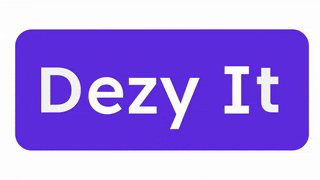3 Ways AI Can Enable Health Systems to Achieve the Quadruple Aim
- purvasha
- Jan 10
- 2 min read
The Quadruple Aim—enhancing patient experience, improving population health, reducing per capita cost of healthcare, and improving clinician well-being—represents a crucial framework for healthcare organizations. Achieving these goals requires innovative strategies and technologies. Artificial intelligence (AI) has emerged as a powerful tool to help health systems make significant progress toward the Quadruple Aim. This blog post explores three key ways AI can enable these improvements.

Understanding the Quadruple Aim:
The Quadruple Aim emphasizes a holistic approach to healthcare improvement, focusing on:
Improved Patient Experience: Enhancing patient satisfaction, engagement, and access to care.
Improved Population Health: Improving the overall health and well-being of communities.
Reduced Cost: Lowering the per capita cost of healthcare while maintaining or improving quality.
Improved Clinician Well-being: Reducing clinician burnout and improving job satisfaction.
3 Ways AI Enables the Quadruple Aim:
Enhancing Patient Experience Through Personalized Care and Access:
AI-Powered Chatbots and Virtual Assistants: These tools provide 24/7 support, answer patient inquiries, schedule appointments, and offer personalized health information, improving convenience and access to care.
Personalized Treatment Plans: AI algorithms can analyze patient data (medical history, genetics, lifestyle) to develop tailored treatment plans, leading to better outcomes and increased patient engagement.
Remote Patient Monitoring: AI-enabled wearable devices and remote monitoring systems track patient vital signs and other health metrics, allowing for proactive interventions and reducing hospital readmissions.
How this addresses the Quadruple Aim: This directly improves patient experience by providing convenient access, personalized care, and remote monitoring. It can also contribute to improved population health by promoting preventive care and early intervention.
Improving Efficiency and Reducing Costs Through Automation and Optimization:
Automated Administrative Tasks: AI automates tasks like appointment scheduling, billing, and coding, reducing administrative burden and freeing up staff for patient care.
Predictive Analytics for Resource Management: AI can forecast patient demand, predict resource needs, and optimize staffing levels, leading to more efficient resource allocation and cost savings.
Drug Discovery and Development: AI accelerates the drug discovery process, potentially leading to faster development of new treatments and lower drug costs in the long run.
How this addresses the Quadruple Aim: This directly reduces the per capita cost of healthcare by streamlining operations and optimizing resource allocation. It also contributes to improved clinician well-being by reducing administrative burden.
Improving Clinician Well-being Through Reduced Burnout and Enhanced Decision Support:
AI-Powered Scribing and Documentation: AI can automate clinical documentation, reducing the administrative burden on clinicians and allowing them to focus on patient interaction.
Clinical Decision Support Systems: AI can analyze patient data and medical literature to provide evidence-based recommendations, supporting clinicians in making informed decisions.
Reduced Workload and Improved Work-Life Balance: By automating routine tasks, AI helps reduce clinician burnout and improves job satisfaction.
How this addresses the Quadruple Aim: This directly addresses clinician well-being by reducing administrative burden and providing decision support. It can also contribute to improved patient experience by allowing clinicians to focus more on patient interaction and care.
Conclusion:
AI offers significant potential for healthcare organizations striving to achieve the Quadruple Aim. By focusing on patient experience, operational efficiency, and clinician well-being, AI-driven solutions can help create a more sustainable, effective, and patient-centered healthcare system. Investing in and strategically implementing these technologies is a crucial step for healthcare organizations looking to thrive in the evolving healthcare landscape.
Learn more at:




